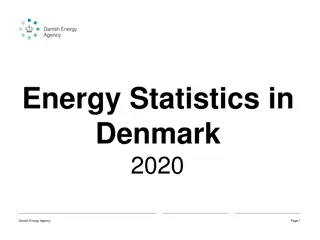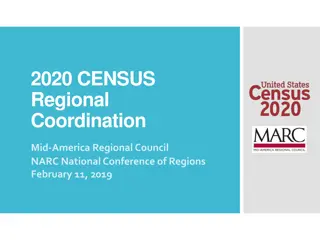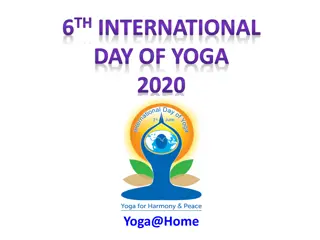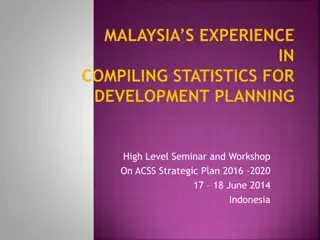
Understanding Environmental Impact Assessment Screening Process
Learn about the screening process in Environmental Impact Assessment (EIA), which focuses on projects with significant adverse environmental impacts. Explore the two main approaches to screening, advantages and disadvantages, scoping impacts and issues, and considering alternatives.
Download Presentation

Please find below an Image/Link to download the presentation.
The content on the website is provided AS IS for your information and personal use only. It may not be sold, licensed, or shared on other websites without obtaining consent from the author. If you encounter any issues during the download, it is possible that the publisher has removed the file from their server.
You are allowed to download the files provided on this website for personal or commercial use, subject to the condition that they are used lawfully. All files are the property of their respective owners.
The content on the website is provided AS IS for your information and personal use only. It may not be sold, licensed, or shared on other websites without obtaining consent from the author.
E N D
Presentation Transcript
1. Screening: A screening mechanism focuses on those projects with significant adverse environmental impacts or whose impacts are not fully known. Other projects with few or no impacts are screened out and allowed to proceed to the normal planning permission. Screening can be partly determined by the EIA regulations operating in a country at the time of an assessment.
In general there are two main approaches to screening: a. the use of thresholds: it involves placing projects in categories and setting thresholds for each project type. These may relate, for example, to project area (e.g. 20 ha and over), to anticipated project impacts (e.g. 50,000 tonnes or more of waste per year to be taken from a site) or to project location (e.g. a designated landscape area). b. case-by-case approach: it involves the evaluation of the characteristics of projects, as they are submitted for screening, against a checklist of guidelines and criteria.
Advantages of thresholds approach: simple to use. more certainty. consistent between decisions within locations. Disadvantages of thresholds approach: inflexible rules on a variable environment. Less room for common sense or good judgment. Difficult to set and, once set, difficult to change. Leads to a increase of projects lying just below the thresholds.
Advantages of case by case approach: Allows common sense and good judgment. Flexible. Can evolve easily. Disadvantages of case by case approach: Likely to be complex. Likely to be slow and costly. Open to abuse by decision-makers because of political or financial interests. Open to poor judgment of decision-makers, Likely to be affected by previous judgments and therefore lose flexibility.
2. Scopingwhich impacts and issues to consider? The scope of an EIA is the impacts and issues it covers, the process of scoping is to decide, from all of a project s possible impacts, which are the significant ones. Scoping is generally carried out in discussions between the developer, the planning authority, other relevant agencies and, ideally, the public. It is often the first stage of negotiations and consultation between a developer and other interested parties. scoping should begin with the identification of individuals, communities and local authorities likely to be affected by the project; good practice would be to bring them together in a working group and/or meetings with the developer.
3. The consideration of alternatives A discussion of alternatives ensures that the developer has considered both other approaches to the project and the means of preventing environmental damage. A number of broad types of alternative can be considered: alternative locations, alternative scales of the project, alternative processes or equipment, alternative site layouts, alternative operating conditions and alternative ways of dealing with environmental impacts.
The consideration of alternative locations is an essential component of the project planning process. In some cases, a project s location is constrained, extraction can take place only in areas with sufficient gravel deposits, and wind farms require locations with sufficient wind speed. For industrial projects, for instance, economic criteria such as land values, the availability of infrastructure, the distance from sources and markets, and the labour supply are likely to be important. For road projects, engineering criteria strongly influence the alignment. In all these cases, however, siting the project away from environmentally sensitive areas, should be considered for instance, gravel
The consideration of different scales of development is also important to project planning. In some cases, a project s scale will be flexible. For instance, the scale of a waste-disposal site can be changed, depending on the demand for landfill space, the availability of other sites and the presence of nearby residences or environmentally sensitive sites. The number of turbines on a wind farm could vary widely. In other cases, the developer will need to decide whether an entire unit should be built or not. For instance, the reactor building of a nuclear power station is a large discrete structure that cannot easily be scaled down.
Alternative processes and equipment involve the possibility of achieving the same objective by a different method. For instance, 1500 MW of electricity can be generated by one combined-cycle gas turbine power station, by a tidal barrage, by several waste burning power stations or by hundreds of wind turbines. Gravel can be directly extracted or recycled, using wet or dry processes. Waste may be recycled, incinerated or put in a landfill.
different site layouts can have different impacts. For instance, noisy plant can be sited near or away from residences. Power- station cooling towers can be few and tall (using less land) or many and short (causing less visual impact). Similarly, operating conditions can be changed to minimize impacts. For instance, a level of noise at night is usually more annoying than the same level during the day, so night-time work could be avoided. Establishing designated routes for project-related traffic can help to minimize disturbance to local residents.
4. Understanding the project/development action: A description of the development proposed, comprising information about the site, the design and size of the development is required. The location of a project should also be clarified. This should include its general location on a base map in relation to other activities and to administrative areas. A more detailed site on a large-scale base map, should illustrate the land area and the main elements of the project. Understanding a project also involves the total operation of the process (usually illustrated with a process-flow diagram). In addition to the types and quantities of resources used (e.g. water, minerals, energy). Moreover, the potential for accidents, hazards and emergencies should be addressed.






















